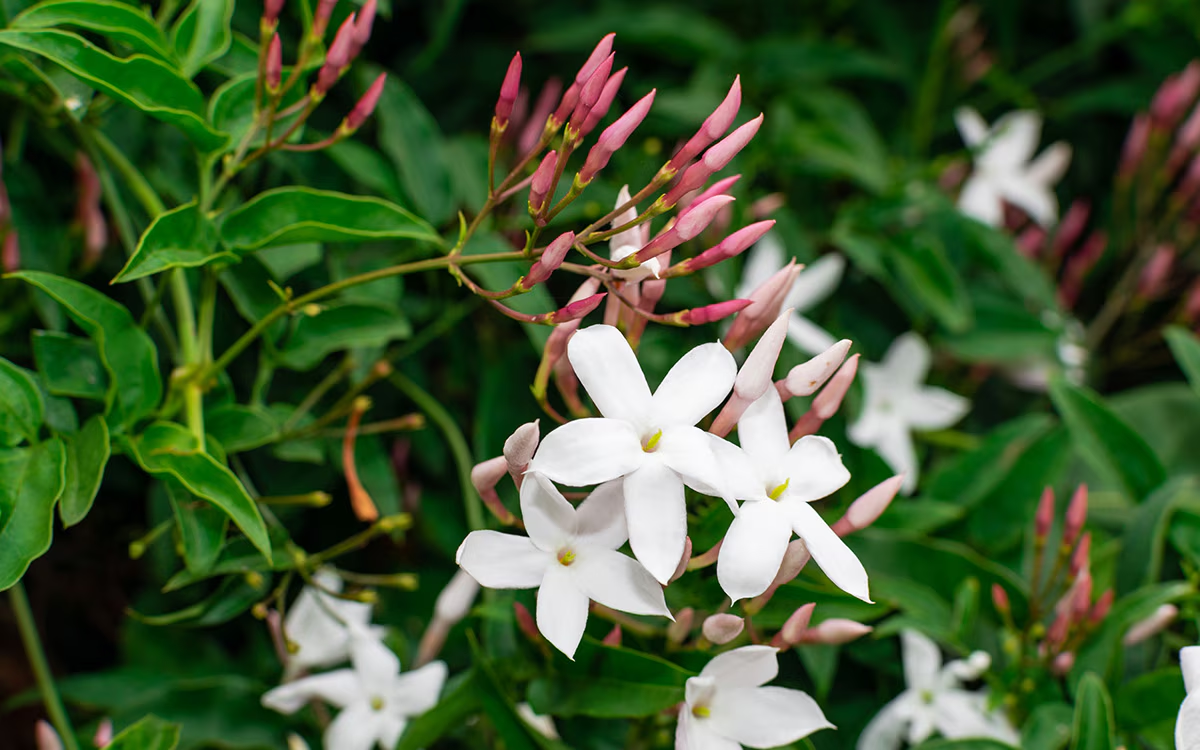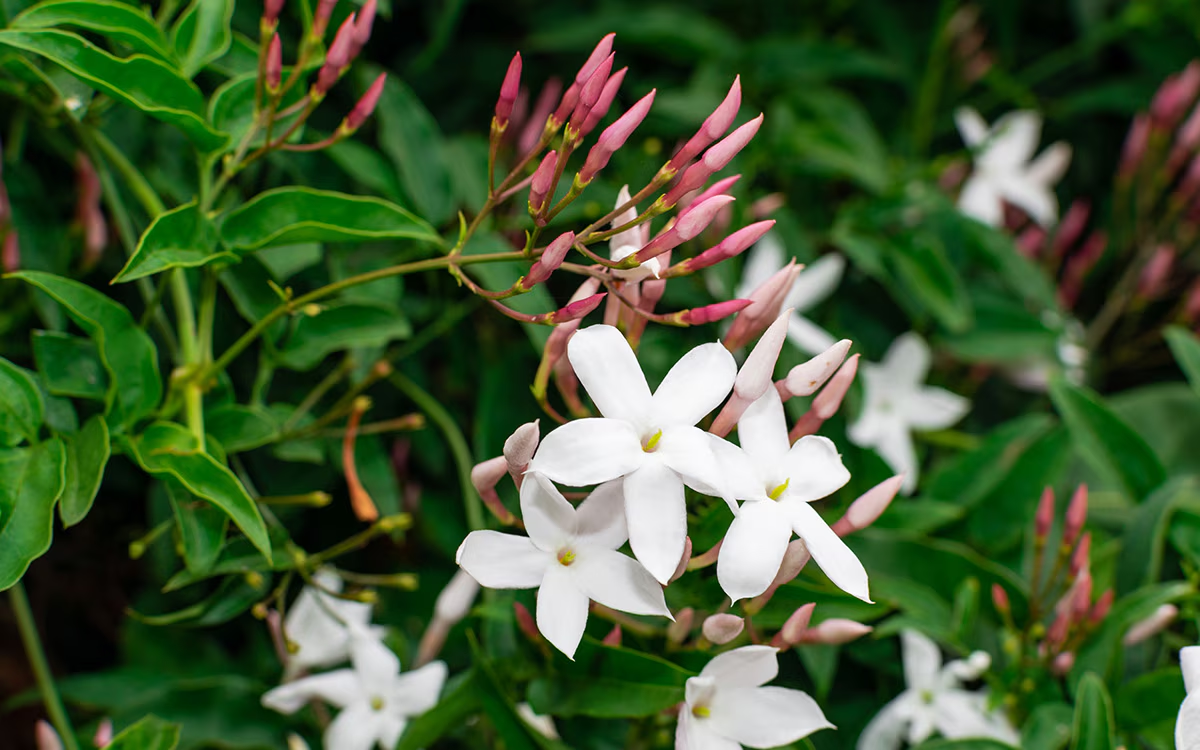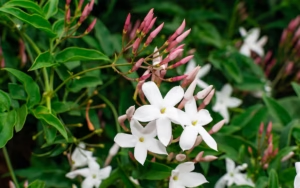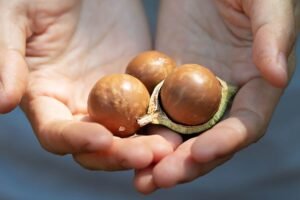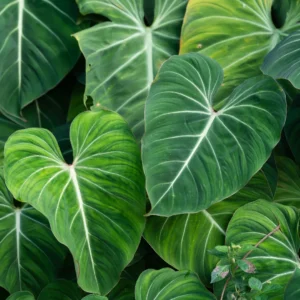Jasmine shrubs are a gardener’s delight, known for their lush foliage and intoxicating fragrance. These versatile plants thrive in various climates and can be grown indoors or outdoors, adding beauty and aroma to any space. Whether you’re a seasoned gardener or a beginner, this guide will provide all the information you need to grow and care for jasmine shrubs successfully.
Quick Overview of Jasmine Shrub
| Common Name | Jasmine Shrub |
|---|---|
| Botanical Name | Jasminum spp. |
| Family | Oleaceae |
| Plant Type | Evergreen or deciduous shrub |
| Mature Size | 3–15 feet tall, 3–6 feet wide |
| Sun Exposure | Full sun to partial shade |
| Soil Type | Well-draining, rich soil |
| Soil pH | Slightly acidic to neutral (6.0–7.0) |
| Hardiness Zones | 7–10 (varies by species) |
| Native Area | Asia, Africa, Mediterranean |
| Toxicity | Non-toxic to humans but may be mildly toxic to pets |
Planting and Transplanting Jasmine Shrub
Selecting the Perfect Location
Jasmine shrubs thrive in a spot with plenty of sunlight. Ideally, choose a location that gets 4–6 hours of direct sunlight daily. If planting indoors, place the jasmine near a south-facing window or use grow lights.
Preparing the Soil
Jasmine prefers well-draining soil enriched with organic matter. If your soil is heavy clay, amend it with compost or sand to improve drainage. Conduct a soil test to ensure the pH is between 6.0 and 7.0.
Planting Steps
- Dig a Hole: Create a hole twice the size of the root ball.
- Position the Plant: Place the jasmine shrub in the hole, ensuring the root crown is level with the ground.
- Fill and Water: Backfill with soil and water thoroughly to eliminate air pockets.
- Add Mulch: Spread a 2-inch layer of organic mulch around the base to retain moisture and regulate temperature.
Transplanting Tips
Transplant jasmine during the early spring or fall to minimize stress. Be gentle with the roots, and water the plant immediately after transplanting to help it adjust to its new location.
Jasmine Shrub Care
Watering
Jasmine shrubs require consistent moisture but dislike soggy roots. Water deeply once a week during the growing season, and reduce watering in winter. Always check the top inch of soil before watering to avoid overhydration.
Fertilizing
Feed jasmine shrubs with a balanced, slow-release fertilizer in spring and summer. Use a product with equal parts nitrogen, phosphorus, and potassium to encourage healthy growth and abundant blooms.
Light Requirements
While jasmine thrives in full sun, some species can tolerate partial shade. If growing indoors, ensure the plant gets at least 6 hours of light daily, supplemented with grow lights if necessary.
Temperature and Humidity
Jasmine shrubs prefer temperatures between 60–75°F. They thrive in humid conditions, so mist the leaves regularly if the air indoors is dry. For outdoor plants, avoid exposing them to frost.
Types of Jasmine Shrub
- Common Jasmine (Jasminum officinale): Known for its sweet-smelling white flowers and vining growth habit.
- Arabian Jasmine (Jasminum sambac): Compact, evergreen shrub popular for making jasmine tea.
- Winter Jasmine (Jasminum nudiflorum): A deciduous shrub that blooms in late winter with yellow flowers.
- Primrose Jasmine (Jasminum mesnyi): Vigorous grower with cascading branches and yellow flowers.
- Spanish Jasmine (Jasminum grandiflorum): Produces large, fragrant white flowers used in perfumes.
Pruning
Why Prune?
Pruning keeps your jasmine shrub healthy, encourages new growth, and maintains its shape. It also prevents the plant from becoming too leggy or overgrown.
When to Prune
Prune jasmine shrubs immediately after they finish blooming. This ensures you don’t accidentally cut off next year’s flower buds.
How to Prune
- Remove Deadwood: Cut away any dead, diseased, or damaged branches.
- Thin Out Growth: Trim excess branches to improve airflow and sunlight penetration.
- Shape the Plant: Use pruning shears to shape the shrub as desired, focusing on maintaining a balanced form.
Propagating Jasmine Shrub
Methods of Propagation
- Cuttings: Take 4–6-inch-long cuttings from a healthy branch, remove the lower leaves, and plant them in moist potting soil. Cover with plastic to retain humidity.
- Layering: Bend a low-growing branch to the ground, cover it with soil, and secure it. Once roots develop, cut it from the parent plant.
- Seeds: Sow seeds in spring, but be patient as germination can take several weeks.
Potting and Repotting Jasmine Shrub
Choosing a Pot
Select a pot with drainage holes that is 2–3 inches larger than the current root ball. Use a well-draining potting mix with added perlite or sand.
Repotting Steps
- Gently remove the plant from its pot, taking care not to damage the roots.
- Loosen the root ball and trim any dead roots.
- Place the shrub in the new pot, backfill with fresh soil, and water thoroughly.
Repot jasmine shrubs every 2–3 years to refresh the soil and provide adequate space for growth.
Overwintering
If you live in a region with cold winters, bring your jasmine shrub indoors before the first frost. Place it in a bright, sunny location and reduce watering to mimic dormancy. Outdoor jasmine can be protected with mulch or burlap to insulate the roots.
Common Problems With Jasmine Shrub
- Yellow Leaves: Often caused by overwatering or nutrient deficiencies. Check the soil and fertilize as needed.
- Leggy Growth: Insufficient light can result in weak, spindly branches. Move the plant to a sunnier spot.
- Leaf Drop: Sudden environmental changes, such as moving the plant indoors, can lead to leaf drop. Allow the plant time to acclimate.
Common Pests & Plant Diseases
- Aphids: Small, sap-sucking insects that cause curled leaves. Remove them with insecticidal soap or a strong water spray.
- Spider Mites: Tiny pests that create webbing on leaves. Increase humidity and use neem oil to control them.
- Root Rot: Caused by overwatering and poor drainage. Prevent this by using well-draining soil and pots with drainage holes.
How to Get Jasmine Shrub to Bloom
To encourage blooming, provide the right conditions:
- Sunlight: Ensure the shrub gets at least 4–6 hours of direct sunlight daily.
- Fertilizer: Use a bloom-boosting fertilizer high in phosphorus.
- Pruning: Remove spent blooms promptly to encourage continuous flowering.
- Temperature: Jasmine shrubs bloom best in warm, humid conditions.
FAQ
Q: Can jasmine shrubs grow indoors?
A: Yes, jasmine shrubs can thrive indoors if provided with sufficient light, humidity, and care.
Q: How often should I water my jasmine shrub?
A: Water once a week during the growing season, allowing the top inch of soil to dry out between waterings.
Q: Do jasmine shrubs attract bees?
A: Yes, the fragrant flowers attract bees, butterflies, and other pollinators, making them great for gardens.
Read also: Macadamia Nut Tree: How to Grow and Care for Macadamia Nut Trees

